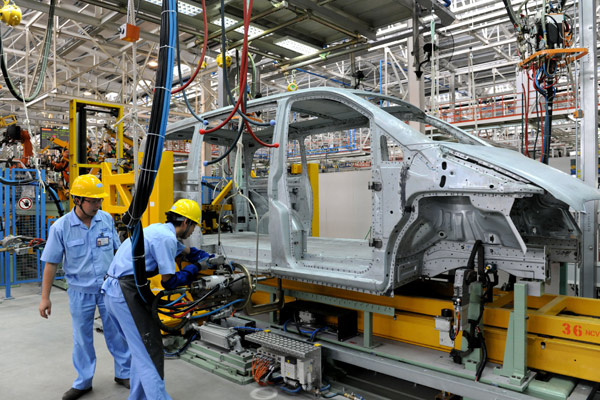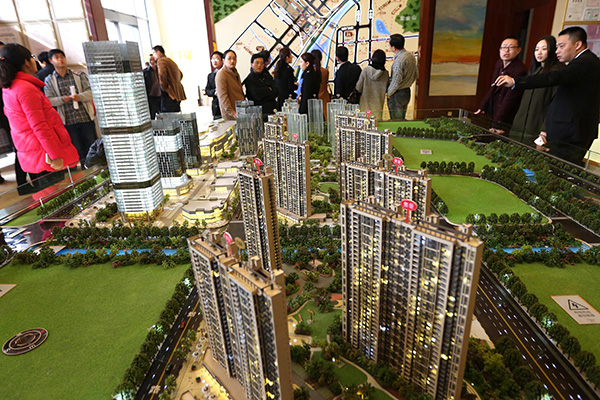Why Taiwan Is Far Ahead of Mainland China in High-Tech — Financial Times commentary
–
–
Every country is touchy about some topics, especially when raised by foreigner. Living in China for almost seven years now, and having been a student of the place for the last forty, I thought I knew the hot buttons not to press. Apparently not.
The topic at hand: high-tech innovation in the PRC and why it seems to lag so far behind that of neighboring Taiwan. A recent issue of one of China’s leading business publications, Caijing Magazine, published a Chinese-language article I wrote together with China First Capital’s COO, Dr. Yansong Wang, about Taiwan’s high-flying optical lens company Largan Precision.
Soon after the magazine was published, it began circulating rather widely. Howls of national outrage began to reach me almost immediately. Mainly we were accused of not understanding the topic and having ignored China’s many tech companies that are at least the equal, if not superior, to Largan.
I didn’t think the article would be all that contentious, at least not the facts. Largan last year had revenues in excess of $1 billion and net profit margins above 40%, more than double those of its main customer, Apple, no slouch at making money. China has many companies which supply components to Apple, either directly or as a subcontractor. None of these PRC companies can approach the scale and profitability of Largan. In fact, there are few whose net margins are higher than 10%, or one-quarter Largan’s. Case in point: Huawei, widely praised within China as the country’s most successful technology company, has net margins of 9.5%.
Taiwan inaugurated its new president last month, Tsai Ing-wen, who represents the pro-Taiwan independence party. Few in the PRC seem to be in a mood to hear anything good about Taiwan. In one Wechat forum for senior executives, the language turned sharp. “China has many such companies, you as a foreigner just don’t know about them.†Or, “Largan is only successful because like Taiwan itself, it is protected by the American government†and “Apple buys from Largan because it wants to hold back China’s developmentâ€.
Not a single comment I’ve seen focused on perhaps more obvious reasons China’s tech ambitions are proving so hard to realize: a weak system of patent protection, widespread online censoring and restrictions on free flow of information, a venture capital industry which, though now large, has an aversion to backing new directions in R&D. In Taiwan, none of this is true.
Largan is doing so well because the optical-quality plastic lenses it makes for mobile phone cameras are unrivalled in their price and performance. Any higher-end mobile phone, be it an iPhone or an Android phone selling for above $400, relies on Largan lenses.
Many companies in the PRC have tried to get into this business. So far none have succeeded. Largan, of course, wants to keep it that way. It has factories in China, but key parts of Largan’s valuable, confidential manufacturing processes take place in Taiwan. High precision, high megapixel plastic camera lenses are basically impossible to reverse-engineer. You can’t simply buy a machine, feed in some plastic pellets and out comes a perfect, spherical, lightweight 16-megapixel lens. Largan has been in the plastic lens business for almost twenty years. Today’s success is the product of many long years of fruitless experimentation and struggle. Largan had to wait a long time for the market demand to arrive. Great companies, ones with high margins and unique products, generally emerge in this way.
We wrote the article in part because Largan is not widely-known in China. It should be. The PRC is, as most people know, engaged in a massive, well-publicized multi-pronged effort to stimulate high-tech innovation and upgrade the country’s manufacturing base. A huge rhetorical push from China’s central government leadership is backed up with tens of billions of dollars in annual state subsidies. Largan is a good example close to home of what China stands to gain if it is able to succeed in this effort. It’s not only about fat profits and high-paying jobs. Largan is also helping to create a lager network of suppliers, customers and business opportunities outside mobile phones. High precision low-cost and lightweight lenses are also finding their way into more and more IOT devices. There are also, of course, potential military applications.
So why is it, the article asks but doesn’t answer, the PRC does not have companies like Largan? Is it perhaps too early? From the comments I’ve seen, that is one main explanation. Give China another few years, some argued, and it will certainly have dozens of companies every bit as dominant globally and profitable as Largan. After all, both are populated by Chinese, but the PRC has 1.35 billion of them compared to 23 million on Taiwan.
A related strand, linked even more directly to notions of national destiny and pride: China has 5,000 years of glorious history during which it created such technology breakthroughs as paper, gunpowder, porcelain and the pump. New products now being developed in China that will achieve breakthroughs of similar world-altering amplitude.
Absent from all the comments is any mention of fundamental factors that almost certainly inhibit innovation in China. Start with the most basic of all: intellectual property protection, and the serious lack thereof in China. While things have improved a bit of late, it is still far too easy to copycat ideas and products and get away with it. There are specialist patent courts now to enforce China’s domestic patent regime. But, the whole system is still weakly administered. Chinese courts are not fully independent of political influence. And anyway, even if one does win a patent case and get a judgment against a Chinese infringer, it’s usually all but impossible to collect on any monetary compensation or prevent the loser from starting up again under another name in a different province.
Another troubling component of China’s patent system: it awards so-called “use patents†along with “invention patentsâ€. This allows for a high degree of mischief. A company can seek patent protection for putting someone else’s technology to a different use, or making it in a different way.
It’s axiomatic that countries without a reliable way to protect valuable inventions and proprietary technology will always end up with less of both. Compounding the problem in China, non-compete and non-disclosure agreements are usually unenforceable. Employees and subcontractors pilfer confidential information and start up in business with impunity.
Why else is China, at least for now, starved of domestic companies with globally-important technology? Information of all kinds does not flow freely, thanks to state control over the internet. A lot of the coolest new ideas in business these days are first showcased on Youtube, Twitter, Instagram, Snapchat. All of these, of course, are blocked by the Great Firewall of China, along with all kinds of traditional business media. Closed societies have never been good at developing cutting edge technologies.
There’s certainly a lot of brilliant software and data-packaging engineering involved in maintaining the Great Firewall. Problem is, there’s no real paying market for online state surveillance tools outside China. All this indigenous R&D and manpower, if viewed purely on commercial terms, is wasted.
The venture capital industry in China, though statistically the second-largest in the world, has shunned investments in early-stage and experimental R&D. Instead, VCs pour money into so-called “C2C†businesses. These “Copied To China†companies look for an established or emerging business model elsewhere, usually in the US, then create a local Chinese version, safe in the knowledge the foreign innovator will probably never be able to shut-down this “China only†version. It’s how China’s three most successful tech companies – Alibaba, Tencent and Baidu – got their start. They’ve moved on since then, but “C2C†remains the most common strategy for getting into business and getting funded as a tech company in China.
Another factor unbroached in any of the comments and criticisms I read about the Largan article: universities in China, especially the best ones, are extremely difficult to get into. But, their professors do little important breakthrough research. Professorial rank is determined by seniority and connections, less so by academic caliber. Also, Chinese universities don’t offer, as American ones do, an attractive fee-sharing system for professors who do come up with something new that could be licensed.
Tech companies outside China finance innovation and growth by going public. Largan did so in Taiwan, very early on in 2002, when the company was a fraction of its current size. Tech IPOs of this kind are all but impossible in China. IPOs are tightly managed by government regulators. Companies without three years of past profits will never even be admitted to the now years-long queue of companies waiting to go public.
Taiwan is, at its closest point, only a little more than a mile from the Chinese mainland. But, the two are planets apart in nurturing and rewarding high-margin innovation. Taiwan is strong in the fundamental areas where the PRC is weak. While Largan may now be the best performing Taiwanese high-tech company, there are many others that similarly can run circles around PRC competitors. For all the recent non-stop talk in the PRC about building an innovation-led economy, one hears infrequently about Taiwan’s technological successes, and even less about ways the PRC might learn from Taiwan.
That said, I did get a lot of queries about how PRC nationals could buy Largan shares. Since the article appeared, Largan’s shares shot up 10%, while the overall Taiwan market barely budged.
Our Largan article clearly touched a raw nerve, at least for some. If it is to succeed in transforming itself into a technology powerhouse, one innovation required in China may be a willingness to look more closely and assess more honestly why high-tech does so much better in Taiwan.
(An English-language version of the Largan article can be read by clicking here. )
(è´¢ç»æ‚å¿— Caijing Magazine’s Chinese-language article can be read by clicking here.)
http://blogs.ft.com/beyond-brics/2016/06/07/why-taiwan-is-far-ahead-of-mainland-china-in-high-tech/
–




















